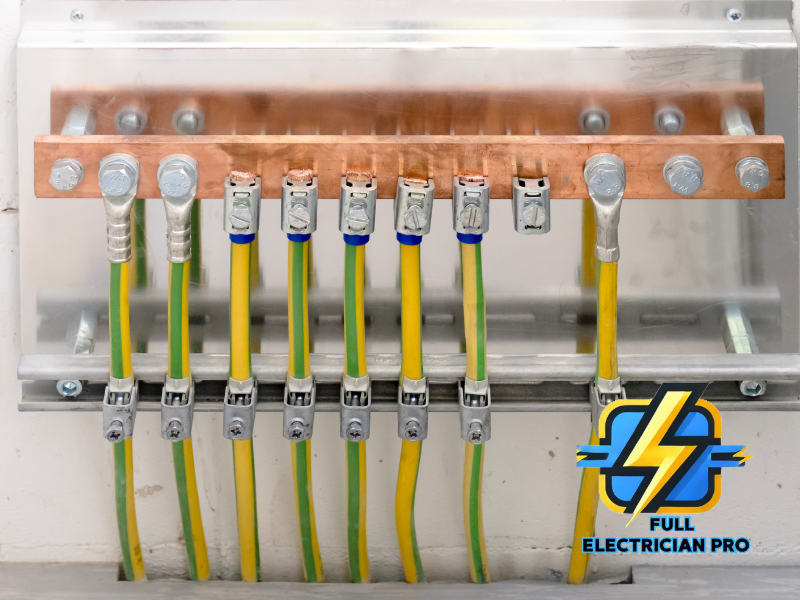
Electrical Grounding: Common Issues, Repairs, and Benefits
Electrical grounding is a fundamental aspect of any electrical system. It provides a safe path for excess electricity to travel into the ground in the event of a fault, preventing electrical shocks, fires, and damage to appliances. Proper grounding ensures the safety and efficiency of the electrical system in homes and businesses. In this guide, we’ll cover the common and uncommon issues with grounding, necessary repairs, and the many benefits of having a properly grounded electrical system.
Common Issues with Electrical Grounding
1. Broken Grounding Wires: Over time, grounding wires can break due to wear and tear, corrosion, or damage from nearby construction. A broken grounding wire leaves the electrical system unprotected, increasing the risk of electrical hazards.
2. Improper Grounding Connections: Poor or loose grounding connections can lead to ineffective grounding, putting the entire electrical system at risk. This can be caused by improper installation or degradation over time.
3. Outdated Grounding Systems: Older homes may have outdated grounding systems, such as knob-and-tube wiring, or lack grounding altogether. These systems do not meet modern safety standards and should be upgraded to ensure safety.
4. Ground Faults: Ground faults occur when the electrical current escapes from its designated path and finds a connection to the ground through an unintended route. This can cause shocks, sparks, or electrical damage if not addressed quickly.
5. Faulty Ground Rods: Ground rods are metal rods driven into the ground to provide a path for excess electricity. If these rods are corroded, broken, or not installed properly, they can compromise the entire grounding system.
Uncommon or Complex Issues
1. High-Resistance Grounding: In some cases, the resistance of the soil around the grounding rods can be too high, preventing the proper discharge of electricity into the ground. This can happen in areas with rocky or sandy soil, requiring additional grounding measures.
2. Stray Voltage: Stray voltage occurs when electrical current flows through unintended conductive paths, such as metal plumbing or structural components. This can be caused by improper grounding or faulty electrical systems and can lead to electrical shocks.
3. Electrical Noise Interference: Poor grounding can cause electrical noise, interfering with sensitive equipment like computers and medical devices. Specialized grounding systems are required to eliminate this interference in complex environments.
4. Multiple Ground Loops: A ground loop occurs when there is more than one grounding path in an electrical system. This can lead to interference or voltage differences between equipment, causing malfunctions or damage to devices.
5. Lightning Protection Issues: Electrical grounding systems must be designed to handle lightning strikes effectively. If a system is not properly grounded, lightning strikes can cause severe damage to buildings and appliances.
Electrical Grounding Repairs
1. Repairing or Replacing Ground Wires: Broken or damaged ground wires must be replaced to restore the safety and functionality of the grounding system. A licensed electrician can assess the wiring and ensure that it is properly connected to the grounding system.
2. Upgrading Outdated Grounding Systems: If your home or business has an outdated grounding system, upgrading to modern standards is crucial for safety. This includes installing ground fault circuit interrupters (GFCIs) and ensuring all circuits are grounded.
3. Installing or Replacing Ground Rods: Ground rods must be properly installed and maintained to provide an effective path for excess electricity. If your ground rods are damaged or ineffective, replacing or adding rods can improve grounding.
4. Addressing High-Resistance Grounding: In areas where the soil has high resistance, additional grounding techniques such as installing longer ground rods, chemical ground rods, or using grounding enhancement materials can lower resistance.
5. Fixing Stray Voltage Problems: Stray voltage issues require an expert to identify and fix the source of the unintended current flow. This often involves reconfiguring the grounding system or installing proper insulation to prevent current from escaping.
Reasons to Install Proper Electrical Grounding
1. Enhanced Electrical Safety: Proper grounding reduces the risk of electrical shock, fires, and damage to your electrical systems. It ensures that any excess electrical current is safely directed into the ground, protecting both people and property.
2. Compliance with Electrical Codes: Modern building codes require proper grounding in all electrical installations. Ensuring your home or business is grounded correctly keeps you compliant with local regulations and avoids penalties.
3. Protection of Appliances and Electronics: Grounding protects sensitive electronics and appliances from electrical surges and faults, extending their lifespan and preventing costly repairs or replacements.
4. Stabilizing Voltage Levels: Grounding helps maintain consistent voltage levels throughout the electrical system, preventing power fluctuations that could damage equipment or cause performance issues.
5. Essential for Lightning Protection: Proper grounding is vital for buildings in lightning-prone areas. It helps direct the massive electrical energy from lightning strikes safely into the ground, reducing the risk of fire or damage.
In conclusion, electrical grounding is critical for ensuring the safety and efficiency of any electrical system. Regular inspections and necessary repairs are key to maintaining a properly grounded system. Whether upgrading an outdated system or addressing grounding issues, professional electricians can ensure your home or business is protected from electrical hazards.